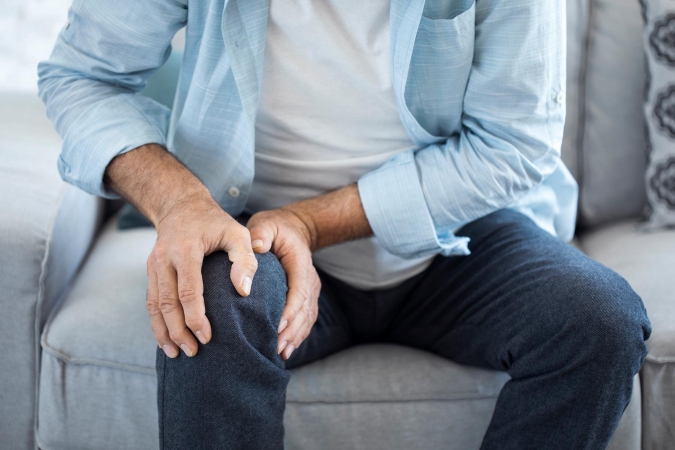Arthritis is a term used frequently, but it is not just one disease. Rather this one word can refer to more than a hundred types of arthritis and joint conditions. The condition is very common and can affect anyone, no matter their age, sex or race. Although it is most seen in older populations, arthritis can be caused by factors beyond wear and tear on the joints, making awareness important for all ages.
Arthritis affects the area where two bones come together. This area is known as a joint and, in addition to bones, includes layers of cushioning cartilage. “In a healthy joint, layers of cartilage allow the bones to interact with one another with normal amount of load distribution. With arthritis, there is damage to the cartilage,” sayd Dr. Adam Shar, UT Health East Texas orthopedic surgeon. “This may be from wear and tear that results in thinning and abnormal contour of the cartilage, or from a different process that causes the joint to become inflamed.” This damage to the cartilage can also occur for other reasons, depending on the type of arthritis.
As previously stated, there are many types of arthritis. The causes of arthritis can be varied: wear and tear, autoimmune diseases, direct injury or infection. The most common type, affecting 44 million people in the United States, is osteoarthritis. “Osteoarthritis involves gradual wear and tear of the cartilage that occurs through time, via natural aging process,” says Dr. Shar. “Symptoms tend to, but not always, start gradually and worsen over time. Symptoms can be made worse by overuse and even seemingly minor injuries.” This disease type can affect anyone, but most commonly affects people in their middle-age or later years. Symptoms can impact any part of the body and, with hundreds of joints, there are many areas that can be affected.
“Common signs and symptoms of arthritis include pain, stiffness and/or swelling. In severe arthritis, cartilage from each end of the bone can wear out completely, which results in bone grinding on bone (“bone-on-bone” arthritis),” shares Dr. Shar. If a person is experiencing pain in the joints, it’s best to see a physician who can then form a treatment plan. To understand the full scope and best treatments for this disease, the physician will likely ask about symptoms, duration/severity of symptoms, previous treatments and whether or not those treatment have been effective. From that point, there are several different options.
Treatment modalities can help a person suffering with arthritis reduce the impact symptoms have on their everyday life. “The goal for treating arthritis is to improve pain and quality of life,” says Dr. Shar. Depending on the type and severity of arthritis, treatments could include exercises, medications, injection and/or surgery.
There are also lifestyle changes one can make to lessen the impact of their symptoms. Incorporating low-impact exercises, such as aquatic classes, can help the body retain muscle strength around the joints and maintain good range of motion. “Maintaining a healthy weight is important, especially in arthritis involving weight-bearing joints, such as hips and knees,” advises Dr. Shar. “As one’s body weight has a direct impact on the amount of load going through the joints, weight loss in overweight patients helps decrease the amount of stress the joints experience, which may provide pain relief as well.” Exercise and a healthy diet will also improve your blood pressure, cardiovascular health, cholesterol levels and mood.
Arthritis is a very common disease that does not have a cure, but there are many ways to treat this condition. Healthcare professionals, from orthopedic surgeons like Dr. Shar to physical therapists, are all there to make sure their patients know all of their options and receive the best care possible. If you are suffering from joint pain or have arthritis, ask your physicians about treatment options. Don’t wait to get healthier and feel better!

Adam Shar, MD, is an orthopedic surgeon who practices at the UT Health East Texas Orthopedic Institute. “My job is to maximize the patient’s potential for improvement and help get the patient to a better condition than he or she was in before treatment.”
Dr. Shar understands the importance of building relationships with his patients. “I’m patient-centered. My treatment is contingent upon how the patient is feeling and what the patient’s goals are.”
He specializes in treatment of the upper extremities, including fractures or treatment of ligaments or tendons of the hand, wrist and forearm, carpal tunnel syndrome, trigger finger, arthritis, elbow disorders and Dupuytren’s contracture.
Dr. Shar earned his bachelor’s degree in biology from The University of Texas at Dallas in Richardson, and his doctor of medicine from The University of Texas Southwestern Medical School in Dallas.

